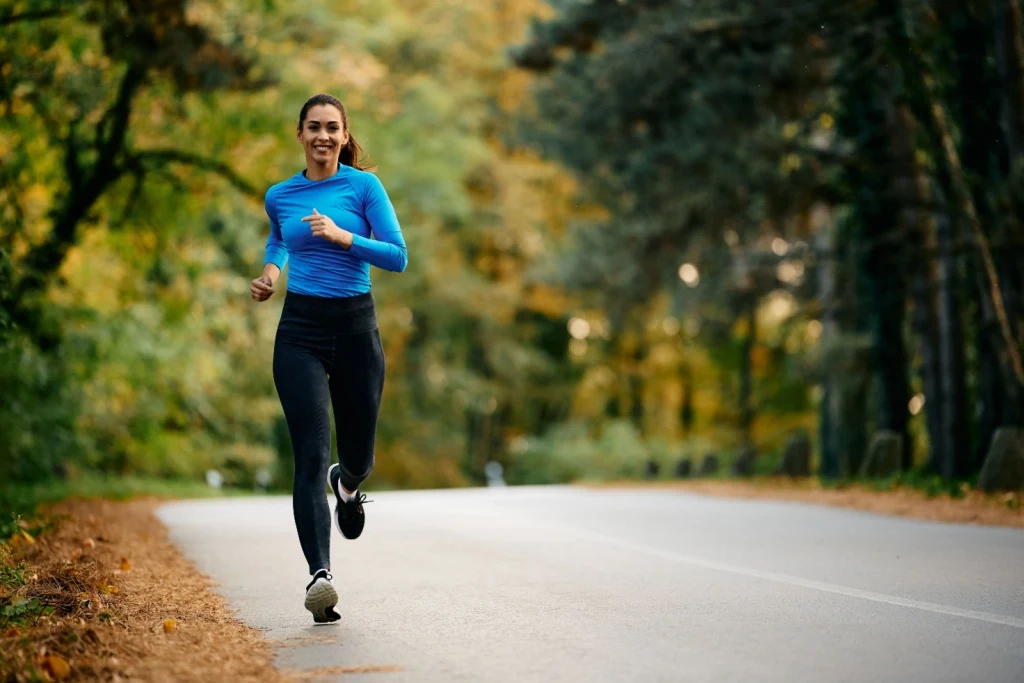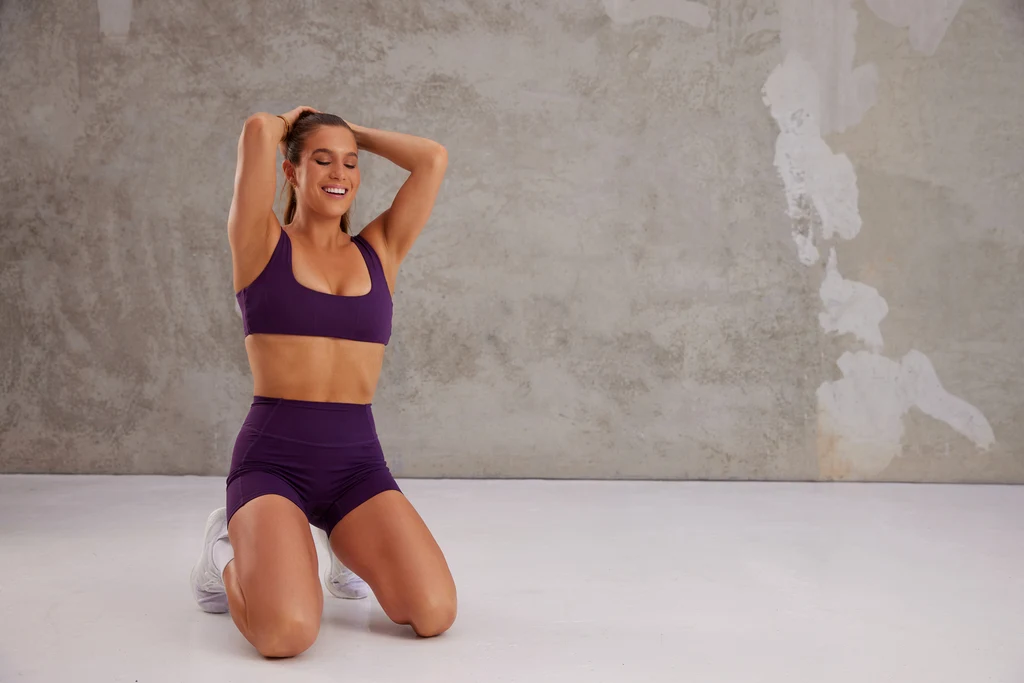Why Slow Running Ultimately Makes You Faster
Slowing down could be just what you need to supercharge your pace.

November 11, 2024 - Updated November 11, 2024

Sometimes you need to slow things down to get to where you want to go, and there’s a reason so many runners and Sweat trainers believe in the adage run slow to get fast.
While we love a running PB as much as the next person, not every run needs to be a fast one. If you find you can’t stop checking your pace on your watch or trying to top your last run? It might be time to slow things down and check in with the benefits of slow running.
What is a slow run?
Almost everybody can be a runner if they want to be, and one person’s slow pace might be considered lightning speed for someone else. We all run for different reasons, at different paces and aim for different distances. If you’re lacing up and getting out there, at the end of the day your speed doesn’t matter, you’re a runner.
A slow run is where you move at a lower intensity, typically at a pace that you could comfortably maintain while holding a conversation. If you measure your heart rate while you work out, this is what you would know as Zone 2 cardio. Here, you’re working at 60-70% of your maximum heart rate.

What are the benefits of running slowly?
While slower runs won’t show up as achievement badges on your next run, there are plenty of reasons to include them in your workout mix.
Oh, and did we mention this one is Sweat trainer-approved? In just five months, trainer Katie Martin went from running 5 kilometres to completing her first marathon and running slow was a key component of her training plan.
“At the beginning, I wasn’t running fit at all,” she shared. “I had to learn to just slow things down and focus on my heart rate. I would try and keep it consistent on my runs to help my body adapt.”
Builds endurance and consistency
“You have to trust in your training,” Katie says. “There were definitely times I was so unsure about how I was going to achieve 42.2km.”
“I didn’t look at the next few weeks of training I had ahead of me, I just focused on each day and each session as they came.”
Her tips for women looking to kickstart their running journey?
“If you are just trying to get into running, set yourself a goal. Think about the distance that you want to run. Say it’s 5km, cut it in half and aim for 2.5km and run as slow as you physically can to the point where you enjoy it,” Katie shared on The Rachel Jay Podcast.
“If you run slow enough, you can run for a very long time. If you’re finding it hard and you’re out on that run, think in your head, could I run slower right now? If the answer is yes, run slower.”
Burn fat, not muscle
When you train in Zones 1 and 2, your body turns to fat as its source of fuel. If you’re looking to manage your weight or change your body composition, you might find slower runs in heart rate Zone 2 can better support you here.
Makes running more enjoyable
Let’s be honest: the start of any running journey is hard. Your body isn’t used to it. The muscle pain is unfamiliar. Your breathing is laboured and your heart rate is elevated. Add feeling average about your pace at the end of a run to the mix, and you’ve got a recipe for disaster.
So many people run because of the incredible mind-body connection and runner’s high that it promotes, but if those words are about as foreign to you as life on Mars, you’re going to want to find a way to make your runs more enjoyable.
Slowing down - and appreciating that a good run can be a slow run - can help you to stick with it and find a meditative rhythm as you build your aerobic base. Remember, even elite athletes include Zone 2 cardio training in their workout routines.
Strengthens your muscles
As the Cleveland Clinic highlights, slow running doesn’t just promote endurance, but helps to strengthen and retrain your muscle fibres. This is where running slow to get fast comes in, because this will ultimately help you to maintain a faster pace for a longer period of time.
Alongside slower runs, Sweat trainer Katie Martin recommends prioritising strength training to help power your progress towards your running goals. This is something she wishes she had known before starting her own running journey!
Reduce your risk of injury
When we dial down the intensity and reduce the impact on our muscles and joints we lower the risk of burnout, overtraining and injury. And as we know, running places a lot of stress on our joints, bones, tendons and ligaments, especially if you’re taking big strides and bounding off the ground with power. Finding a way to include consistent runs in your routine with less strain on your body? Slow running gets a big tick from us here.

Progress towards your goals
No matter what your dream pace or distance is, slowing things down will help you get there faster.
“You will get the best results and progress your fitness the fastest if you stay in what we call Zone 2,” says Katie.
The 80/20 rule
So, you’re sold on the benefits of running slow but you’re probably wondering: how often should I include it in my routine?
Many runners - we’re talking your Saturday morning 5km crew and distance runners alike - subscribe to the 80/20 rule when it comes to their running mix.
This is where 80% of your runs are slow and 20% are at the pace you would run at if you’re striving for a PB.
In his book 80/20 Running: Run Stronger and Race Faster by Training Slower, author Matt Fitzgerald points to multiple studies that suggest elite runners run 80% of their runs at a slower pace while more recreational runners have more of a 50/50 split.
So next time you lace up and head out the door, consider making your run a slow one.
We love low-intensity steady state cardio
You’ll find low-intensity steady-state (LISS) cardio sessions in almost every Sweat program. From slow runs to swimming to cycling, slowing things down can really help you to unlock your potential.

Amy is a writer and editor at Sweat. She has over a decade of experience in women’s publishing and digital media and has previously worked across titles including Mamamia, Grazia and Cosmopolitan.
* Disclaimer: This blog post is not intended to replace the advice of a medical professional. The above information should not be used to diagnose, treat, or prevent any disease or medical condition. Please consult your doctor before making any changes to your diet, sleep methods, daily activity, or fitness routine. Sweat assumes no responsibility for any personal injury or damage sustained by any recommendations, opinions, or advice given in this article.
Fitness